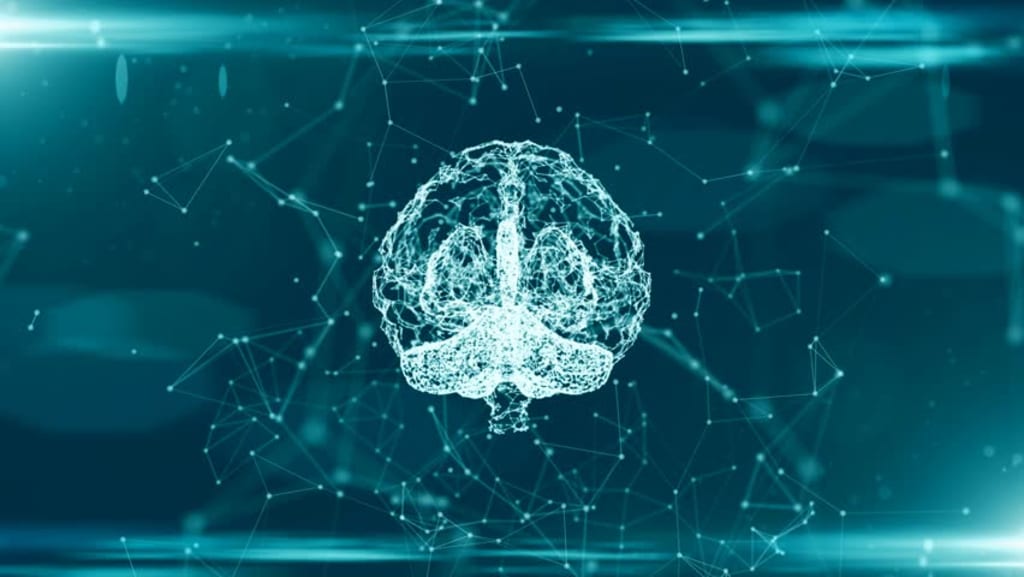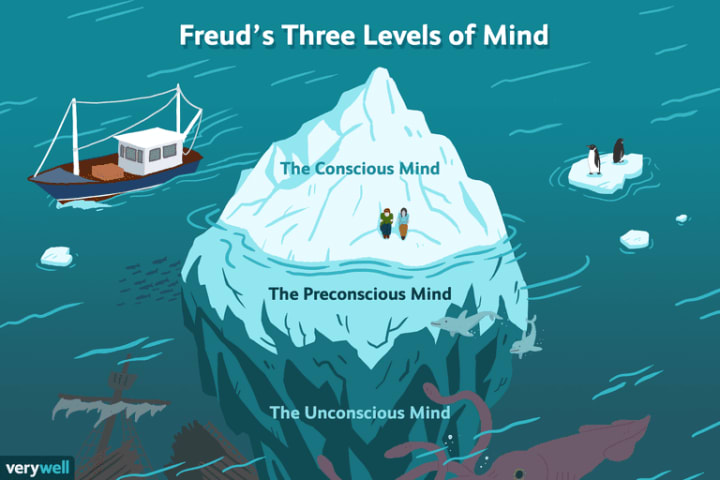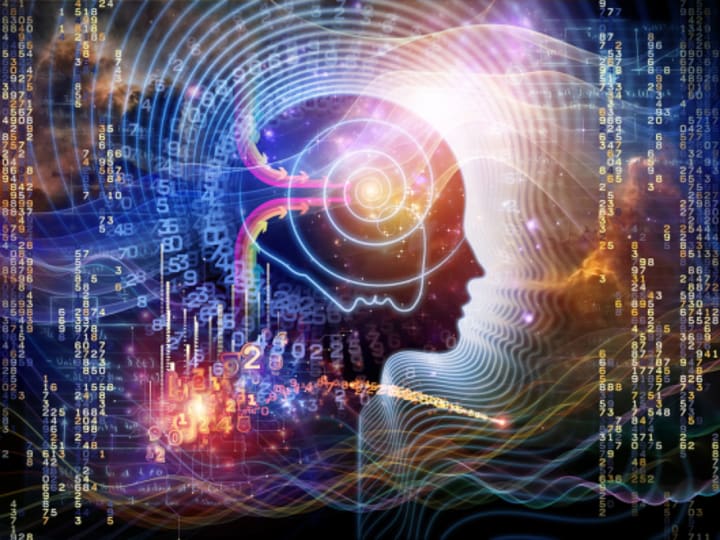The Power of Habit
A New Take on New Year's Resolutions

December is an interesting month for most of the modern world as people get together with their families, eat a surplus amount of food, and exchange gifts or perform other religious acts. This holiday is quickly followed by an entire week of shopping deals, in which people are likely to participate considering they are still in the "money-spending mood."
Although this stressful, holiday craze is intriguing on its own, what I find more interesting is what follows: New Year's. It is this time in our lives when we reflect on the past year, enjoy some food and beverage with our friends and loved ones, and countdown to midnight for the next year. However, what is particularly interesting about this holiday is an ancient custom: New Year's resolutions.
The History of New Year's Resolutions

Janus (Ancient Roman God)
Although New Year's resolutions may seem like a relatively modern tradition, they have a long history that dates back millenia. For instance, the Babylonians, the people of the ancient middle-eastern state of Babylonia (1895 BC-539 BC), would make promises to their deities at the start of each year that they would return borrowed goods and pay their debts.
Meanwhile, the Romans, the people of the Ancient Roman Empire (753 BC-1453 AD), would pray to their deity Janus, the god of beginnings, gates, transitions, time, duality, doorways, passages, and endings. He is depicted with two faces, one looking to the past, the other to the future, and, thus, the Romans would pray to this deity to improve from their past into the new year.
In addition, many different Christian denominations, such as Baptists, Pentecostals, and Methodists, partake in a watchnight service held late on New Year's Eve until after midnight. The service was created in 18th century, in which individuals would reflect on their past year, make confessions of their sins, and prepare for the year ahead with prayer and resolving to be better people in the eyes of God. This is also known as a midnight mass or eucharist to Anglicans and Catholics.
The Subconscious Mind

Psychoanalytic Theory: Iceberg Model
Sigmund Freud, the founder of psychoanalytic theory, formed a model for the human subconscious, which is commonly known as "the iceberg model." In this model, the mind is divided up into three sections:
- The ID (Unconscious Mind): The ID is the bottom half of the iceberg, constantly in opposition of the superego. Freud describes the ID as the source of our bodily needs, wants, desires, and impulses, particularly our sexual and aggressive drives. It works off of the pleasure principle, the psychic force that motivates the tendency to seek immediate gratification. For example, sexual urges are considered characteristics of the ID, providing us with the desire for immediate gratification. This part of the brain acts as our raw, animal nature.
- Ego (Conscious and Preconscious Mind): The Ego is the top portion of the iceberg, the organized part of personality that includes defensive, perceptual, intellectual-cognitive, and executive functions. Freud describes the ego as the portion of the mind that works on the reality principle, constantly assessing the pros and cons of falling into the desires of the ID. Therefore, this region is responsible for our judgment, tolerance, reality testing, control, planning, defense, synthesis of information, intellectual functioning, and memory. Lastly, this region is what allows us to make sense of the world around us, separating fiction from reality. We are aware of these actions on a conscious level, but the filtration is so automatic that it often occurs in our preconscious mind.
- Superego (Conscious and Unconscious Mind): The superego works in contradiction to the ID, as explained previously, striving to act in a socially appropriate manner. In other words, the superego attempts to seek perfection in the eyes of others based upon our social and cultural standards. The super-ego controls our sense of right and wrong and guilt through what is known as cognitive dissonance, which is the feeling of anxiety we have when we have done something "wrong." For example, if you decide to have a few drinks before driving your friends home from the bar one night, you may have a stomach-wrenching feeling inside you. This anxiety is cognitive dissonance for doing something life-threatening and against the law. Another example could be something less extreme, such as using a phone during an exam or test. The opposite end of the spectrum is cognitive consistency, which is when our actions successfully match our beliefs and standards.

The Abstract Subconscious Mind; Art by Cameron Gray
The subconscious mind is responsible for filtering through the reality and perceptions offered by the ego without our constant awareness. It is responsible for our habits, desires, emotions, bodily processes, etc. For instance, when you wake up in the morning, take a shower, brush your teeth, prepare a coffee, eat breakfast, drink a glass of water, or whatever your routine is, you are operating on "autopilot," such that your brain is using what it knows about your routine to perform it efficiently without you having to think about each step.
Scientists think that humans only have access to about 4-5 percent of their brain, as the other 95-96 percent is all subconscious, raw data, loaded in memories and knowledge that our brain has obtained throughout every second of our lives. Now, this does not have ANYTHING to do with the 10 percent theory of our brain's capacity; it simply means that our brains act before we are aware of it because it is less laggy, more efficient, and more accurate than we ever could be on a conscious level. Take a handful of change for example; as you look at it, you begin to count it on a conscious level, but your brain has already determined the amount for you, including the number of coins, their shape, depths, colors, writing, illustrations, etc.
The Power of Habit

Your brain, like a tree, is always growing in an abstract field of thought, memory, and consciousness.
Now that you understand the basics of how the subconscious and conscious mind interact with each other to make decisions for us throughout our lives, let's discuss how strong these habits truly are.
Habit, by definition, is "a settled or regular tendency or practice, especially one that is hard to give up" (Google). The human mind is built on habit because it is what allows us to survive and perform our daily functions without having to waste so much energy on thinking about them. However, we also know that habit can lead us astray, causing us to perform self-destructively. If you have read one of my previous articles on intelligence, you will know that the human brain has three main dimensions that keep us alive:
- Consciousness: the very state of being aware involves the use of the senses, such as sight, hearing, smell, taste, and touch. These senses are what allow us to be aware of our environment, and to examine it for dangers, methods of escape, possible weapons for defence, etc. However, consciousness is limited to its ability to keep us alive because it is simply the window of experience; it does not tell the brain how or when to act, as it only tells the brain what is happening.
- Memory: memory is the ability of the brain to experience something and store that data for future retrieval and access. When a baby is born, they do not have great vision, as the brain has not developed any memories of what it is experiencing, and, thus, the child can only see shapes and shadows and not true color or clarity. However, as the child grows and the brain matures it optic centers, it is better able to process the conscious ability to see into memory so that it can not only see what is in the room, but can understand what it is seeing. This is not to say that the baby knows what every object is, but that the brain has the memory to recognize these objects so that every time we see them, it is instantly recognizable.
- Intelligence: the final dimension of the human brain is intelligence, whether emotional, social, physical, analytical, logical, abstract, etc. The brain uses what it has gathered in conscious awareness, compares it to its previous memories of that experience to identify it more clearly, and then accesses its stores information on that experience or object to understand not just what it is, but how it affects reality. For instance, the brain has used it conscious ability to see, quickly followed by storing the shape, depth, color, texture, gradient, and dimensions in its memory, and, lastly, accesses its previous knowledge on the object to understand what it is, how it works, if its dangerous, if its safe, and how it affects them or others. This intelligence is what allows us to survive, as it tells us how to react in situations or how to use objects to our advantage.
Consciousness, like memory and intelligence, has no specific location in the brain. Scientists believe that these big three exist simultaneously within the connections of the entire brain. Each of them work together to ensure our survival and provide us with a meaningful life; consciousness works to feed our memories, memories work to strengthen our intelligence, and intelligence works to maintain our consciousness.

What is consciousness and where is it located in the human brain?
Because the brain operates with three basic functions of consciousness, memory, and intelligence, the more we do something, the more likely our brains are to remember this information and transform memories and intelligence into habit. Habits are extremely difficult to break because the brain is wired to perform common tasks efficiently without thinking about them, such as eating, sleeping, drinking, sensing, etc.
Without the ability for the brain to form habits, we would lack routine and organization and perform the same task differently every time; that is, if we could even remember how to maintain the dexterity or knowledge required to perform that task. The brain does not like to change its routine because once it has developed a strong connection between consciousness, memory, and intelligence, it lacks the desire to form new patterns as they lack the efficiency and strength of old ones. This is why the common saying that "humans are habitual creatures" is so accurate.
New Year's Resolutions

According to a study in 2007 by Richard Wiseman from the University of Bristol involving 3,000 people, 88 percent of those who set New Year's resolutions fail, despite 52 percent of the study's participants being confident of success at the beginning. We now know that the likely cause of their poor success is the habitual nature of the human brain.
However, because the brain is highly neuroplastic, such that every second of every day it is rewiring itself to gain new knowledge and form new memories, it is not impossible to change a habit. I say change a habit because the brain is more likely to better adapt to a change in habit rather than an immediate break in habit.
This is the main problem with New Year's resolutions in the modern world; people want to break a habit or remove a trait from themselves with the new year as their clean slab. However, it is important to remember that just because the year is new does mean that the person is new. The experiences we have had, the things we have done, the habits we formed, whether all bath or good, are still a part of our being regardless of the year.
It is an appealing idea to think of the new year as a fresh start, but this is self-destructive as we attempt to rid ourselves of the old version for a new, "better" version. We fail to see that this old version is indeed the very one that has allowed us to survive, grow, laugh, explore, develop relationships, etc. The old version is not a system failure that needs to be radically altered to feel good about one's self, and is instead a story in which one is unable to rewrite the past, but is able to change what they write in their present.

Source: James Clear
The majority of people fail at New Year's resolutions not just because the brain is hardwired to be habitual, but because they have unrealistic expectations of themselves. To change a habit we must first identify the nature of our habit, why we perform or act in certain ways, and what goals are realistic for our habit; this is known as introspection, where the individual looks within themselves to understand why they act or think they way that they do. One cannot expect to stop smoking tomorrow and never have the urge again, just as one cannot go to the gym once and become an athlete. The goals we set need to be realistic, measurable, and specific enough for us to achieve them; this known as goal setting.
After we have identified our goals and habits, we must begin to change our perspective on ourselves and our behaviors. Perspective is a major factor in improving ourselves because it is the foundation of our beliefs, practices, and how we approach situations. Once you have changed your perspective, you can then begin to change the way you approach your routine, whether it be through one less cigarette, one less desert, or fifteen more minutes at the gym. Slowly, your brain will adapt to these changes and will begin to integrate them into new habits. Eventually, these small changes will allow you to break your old habits as your new ones become routine.

The final thing I want you all to remember is that you do not need to wait for a day to change yourself or improve your life. The brain is changing all the time; by the end of this article you will not be the same person that you were in the beginning as you have obtained new knowledge and hopefully formed new memories. You have the ability to change your life any moment of any day. Do not simply hope or wish for change, as these are action-less expectations that usually lead to disappointment; you must ACT for change. One does not achieve in life by hoping it will get better, but by doing to make their life better.
I wish you a Happy New Year! Now, go act.
About the Creator
Justin Gignac
Hello there! I am a registered nurse with a major passion for writing and language. I enjoy writing about science fiction, mindfulness, health, psychology, wellness, philosophy, and the mysteries of being human.







Comments
There are no comments for this story
Be the first to respond and start the conversation.